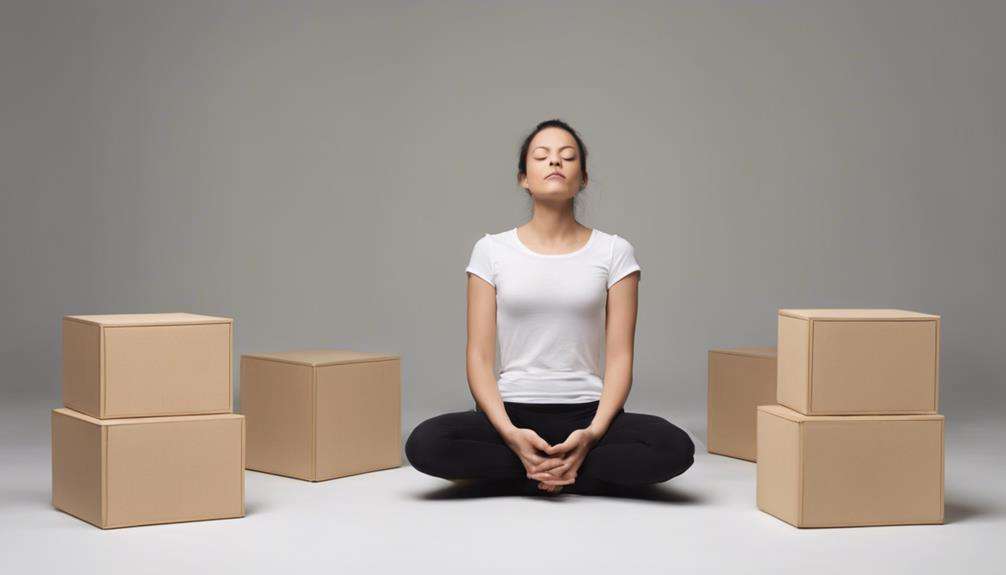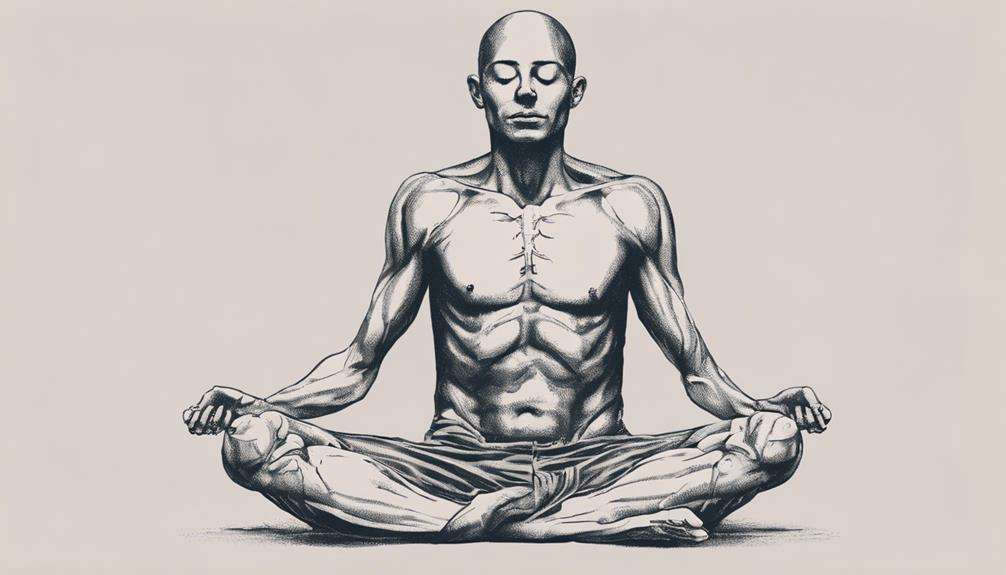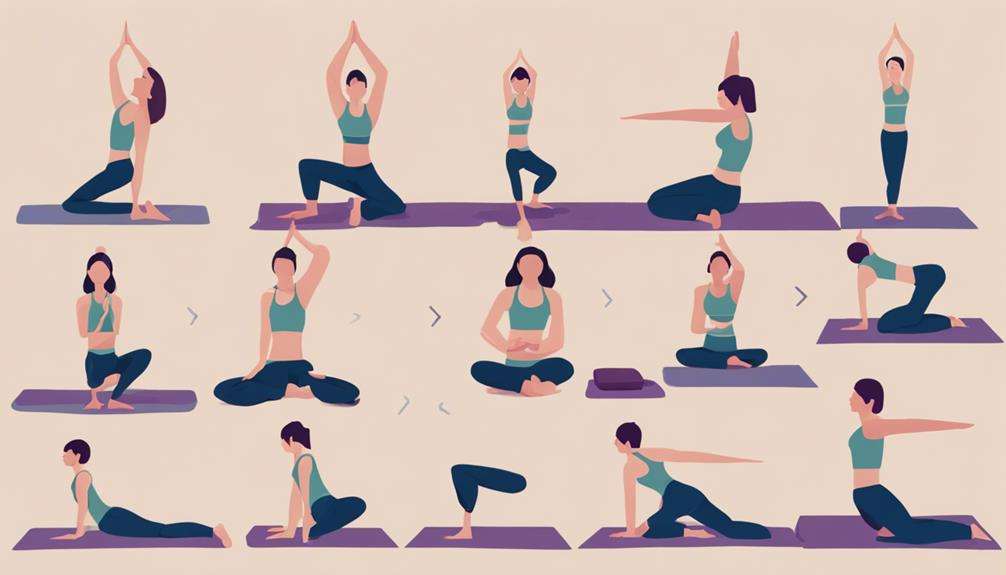Curious about how mastering breath awareness can boost your overall well-being? Discover effective techniques that can enhance your health and performance levels.
By honing in on the power of breath, you can open a world of benefits that extend beyond physical health.
Immerse yourself in the world of breath awareness and witness the transformative effects it can have on your daily life.
Key Takeaways
- Cultivate a profound mind-body connection for optimal wellness.
- Enhance mental clarity and cognitive performance through breath awareness.
- Regulate emotions, reduce stress, and promote relaxation for well-being.
- Improve decision-making skills, concentration, and emotional regulation with breath awareness.
Importance of Breath Awareness
Embracing breath awareness as a daily practice cultivates a profound connection between mind and body. Your respiratory system plays a crucial role in this practice, serving as the gateway for oxygen to enter your body and fuel your cells. By being mindful of your breath, you can optimize the functioning of your respiratory system, ensuring a steady flow of oxygen to support your overall health and well-being.
Through breath awareness, you can regulate your emotions, reduce stress, and enhance mental clarity. This practice allows you to increase your oxygen intake, providing essential support for cellular functions and promoting a sense of vitality. By focusing on your breath, you can improve your focus, concentration, and cognitive performance, leading to enhanced productivity and mental sharpness.
Additionally, incorporating breath awareness techniques into your daily routine can promote relaxation, alleviate anxiety, and improve the quality of your sleep. By nurturing this connection between your mind and body, you can develop better self-regulation, emotional stability, and resilience in tackling life's challenges.
Mindful Breathing Techniques
To begin exploring the practice of Mindful Breathing Techniques, consider how focusing on your breath can cultivate a sense of peace and presence in your daily life. Mindful breathing involves paying attention to each inhale and exhale, bringing awareness to the present moment.
One effective technique is diaphragmatic breathing, where you focus on engaging your diaphragm to take deep, slow breaths. By practicing diaphragmatic breathing, you can activate your body's relaxation response, which helps lower your heart rate and reduce stress levels.
Through mindful breathing techniques, you can enhance your mental well-being by reducing anxiety and improving your overall mood. Regular practice of mindful breathing can also boost your concentration levels and help you regulate your emotions more effectively.
The beauty of mindful breathing lies in its accessibility – you can practice it anywhere, at any time. By incorporating diaphragmatic breathing into your daily routine, you can harness the power of your breath to promote relaxation and inner peace.
Diaphragmatic Breathing Practice

When practicing diaphragmatic breathing, focus on deep belly breathing to engage your diaphragm fully.
This technique can bring about a sense of calm and relaxation, helping improve oxygen flow throughout your body.
Embracing this mindful practice regularly may enhance your overall well-being and cognitive function.
Deep Belly Breathing
Engage your diaphragm in deep belly breathing to release relaxation and reduce stress effectively. This technique not only calms your mind but also benefits your immune system by reducing the production of stress hormones.
By taking deep breaths that engage the diaphragm, you increase oxygen flow, promoting better respiratory function and enhancing overall well-being. Deep belly breathing can trigger your body's relaxation response, leading to a decrease in heart rate and blood pressure.
Regular practice of this mindful breathing technique can improve your focus, mental clarity, and emotional stability. Embrace diaphragmatic breathing as a foundational practice in mindfulness, allowing you to cultivate presence and awareness in each moment.
Prioritize your well-being through the power of deep belly breathing.
Benefits of Diaphragmatic Breathing
Experience the profound benefits of diaphragmatic breathing by allowing your breath to naturally deepen, promoting relaxation and enhancing your overall well-being. When you engage in diaphragmatic breathing, you activate the diaphragm muscle, leading to deeper breaths and increased oxygen flow throughout your body. This practice can have several positive effects on your physical and mental health:
- Reduced Stress Response: By stimulating the parasympathetic nervous system, diaphragmatic breathing helps lower your heart rate and induces a state of calmness.
- Improved Lung Function: Regular diaphragmatic breathing can enhance your respiratory efficiency, increasing oxygen delivery to your tissues and organs.
- Enhanced Posture and Core Strength: Engaging the diaphragm and focusing on deep breathing can strengthen core muscles, support better posture, and even engage your calf muscles for stability and balance.
Alternate Nostril Breathing Exercise
To begin the Alternate Nostril Breathing Exercise, find a comfortable seated position with your spine straight and shoulders relaxed. This yogic technique, known as Nadi Shodhana, focuses on balancing the flow of energy in your body by alternating nostrils.
By practicing this breathing exercise, you can promote a sense of calmness, reduce stress levels, and enhance your focus and concentration. Research indicates that this method can harmonize the left and right hemispheres of the brain, leading to improved cognitive function.
Regular practice of alternate nostril breathing can also boost respiratory function and contribute to your overall well-being. Take a few moments each day to incorporate this simple yet powerful technique into your routine, and experience the benefits it offers for your mind and body.
Embrace this practice as a way to find balance and cultivate a deeper sense of inner peace.
Box Breathing Method

The Box Breathing method involves rhythmic breathing patterns of equal counts, promoting relaxation and mental clarity through balanced oxygen and carbon dioxide levels in the body. By incorporating this technique into your daily routine, you can experience a multitude of benefits that contribute to your overall well-being.
- Balanced Breathing: Box Breathing focuses on inhaling, holding, exhaling, and holding breath for equal durations, typically around 4 seconds each. This balanced approach helps regulate your autonomic nervous system, leading to reduced stress and anxiety levels.
- Enhanced Focus: Through the regulation of oxygen and carbon dioxide levels in your body, Box Breathing can enhance your focus, concentration, and mental clarity. This practice provides a sense of calm and control, allowing you to tackle tasks with improved efficiency.
- Improved Respiratory Function: Regular practice of Box Breathing can't only reset your body's stress response but also enhance respiratory function, increase lung capacity, and support your body's nutritional needs. Embrace this technique as a simple yet powerful tool to optimize your wellness.
Breath Counting Meditation
As you start exploring breath counting meditation, you'll find a simple yet profound way to enhance your focus and mindfulness.
By gently counting each breath in and out, you can cultivate a sense of calm and reduce stress.
This technique invites you to observe your breathing patterns and regulate them for a more tranquil state of mind.
Focus on Breath
Begin on the journey of breath counting meditation, a practice that enhances focus and awareness of the present moment. By paying attention to each inhale and exhale, you can deepen your mindfulness and concentration. Here are three tips to help you make the most of this technique:
- Stay Present: Focus solely on the sensation of your breath as you count each cycle.
- Maintain Consistency: Try to count from one to ten and then start over, keeping a steady rhythm.
- Embrace Imperfections: If your mind wanders, gently return to counting without judgment.
Breath counting meditation offers a simple yet impactful way to regulate your breathing, reduce stress, and foster a sense of inner calm. Keep practicing to enjoy the benefits of enhanced well-being and mental clarity.
Counting for Mindfulness
Embrace the practice of breath counting meditation to enhance your mindfulness and deepen your connection with the present moment. By directing your attention to the rhythmic flow of your breath, you can foster a sense of inner calmness and sharpen your focus.
As you count each inhale and exhale, distractions fade away, allowing you to cultivate a heightened awareness of the now. This technique not only boosts your concentration but also nurtures patience and emotional regulation.
Through regular practice, breath counting can serve as a powerful tool for improving decision-making skills and reducing stress. Start your journey towards enhanced mindfulness today by incorporating this simple yet effective method into your daily routine.
Breath Retention Practice

Enhancing your breath awareness through the practice of Kumbhaka, or breath retention, can bring profound benefits to your physical and mental well-being. By focusing on this breath retention technique, you can cultivate a deeper sense of mindfulness and inner peace. Here are three key benefits of incorporating breath retention into your daily practice:
- Improved Respiratory Function: Breath retention practice can enhance lung capacity and respiratory efficiency, allowing for better oxygen circulation throughout your body.
- Stress Reduction: Engaging in breath retention activates the parasympathetic nervous system, helping to reduce stress levels, promote relaxation, and calm the mind.
- Enhanced Mental Clarity: By challenging your body's tolerance to CO2, breath retention can improve mental focus, clarity, and emotional regulation, leading to a more balanced state of being.
Frequently Asked Questions
How Do You Breathe for Optimal Health?
To breathe for best health, focus on deep diaphragmatic breathing. Slow your breath to 6 breaths per minute. Practice coherent breathing. Embrace nasal breathing. Incorporate breath-holding exercises. These breathwork benefits enhance oxygen flow, reduce stress, and promote wellness.
What Is the 5 Point Breathing Technique?
To master breath control, try the 5 Point Breathing Technique. Focus on five body areas per breath cycle for relaxation and mindfulness. Regular practice enhances oxygen flow, emotional regulation, and mental clarity, leading to improved well-being.
How Do You Practice Breath Awareness?
To practice breath awareness, begin by focusing on your breath. Feel the air enter and leave your nostrils. Try techniques like breath counting or diaphragmatic breathing. Incorporate it into daily activities for best wellness.
What Is the 4 7 8 4 Breathing Technique?
Breathe in for 4, hold for 7, and exhale for 8. This breath control technique can calm your mind, reduce stress, and enhance focus. Try it regularly to boost relaxation, improve respiratory function, and support overall wellness.
Conclusion
In mastering breath awareness, you reveal the key to vital wellness. By practicing mindful breathing techniques, diaphragmatic breathing, alternate nostril breathing, box breathing, breath counting meditation, and breath retention, you pave the way for improved sleep, reduced stress, enhanced cognitive and physical performance, and overall well-being.
Embrace the transformative power of your breath, and watch as it leads you to a life of balance and vitality.
Breathe in. Breathe out. Thrive.






